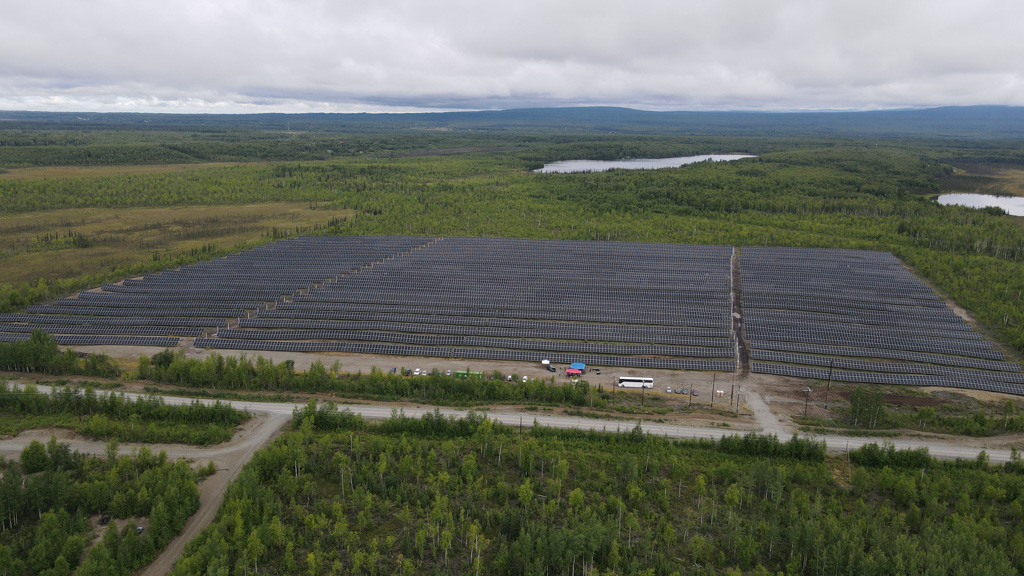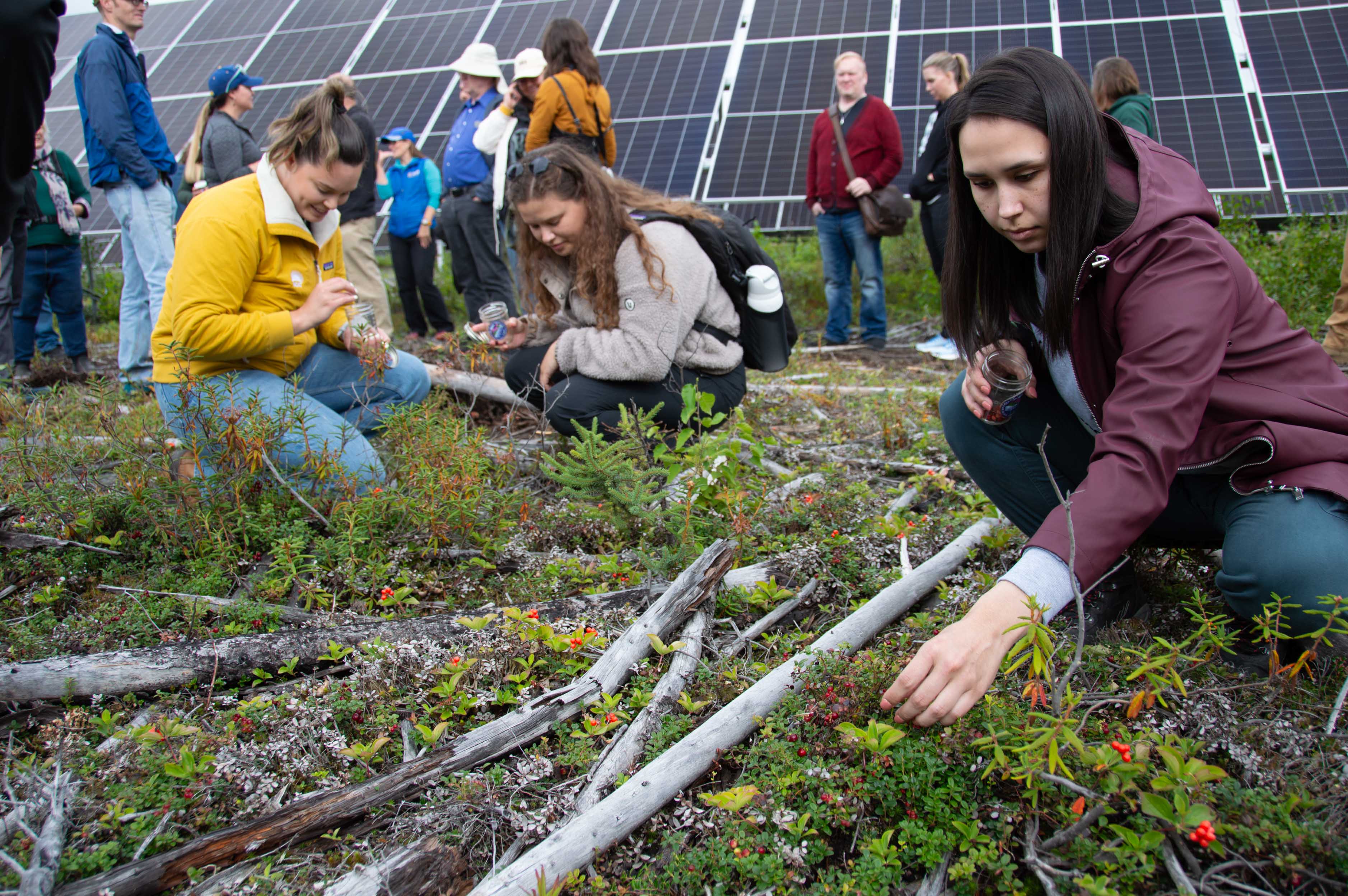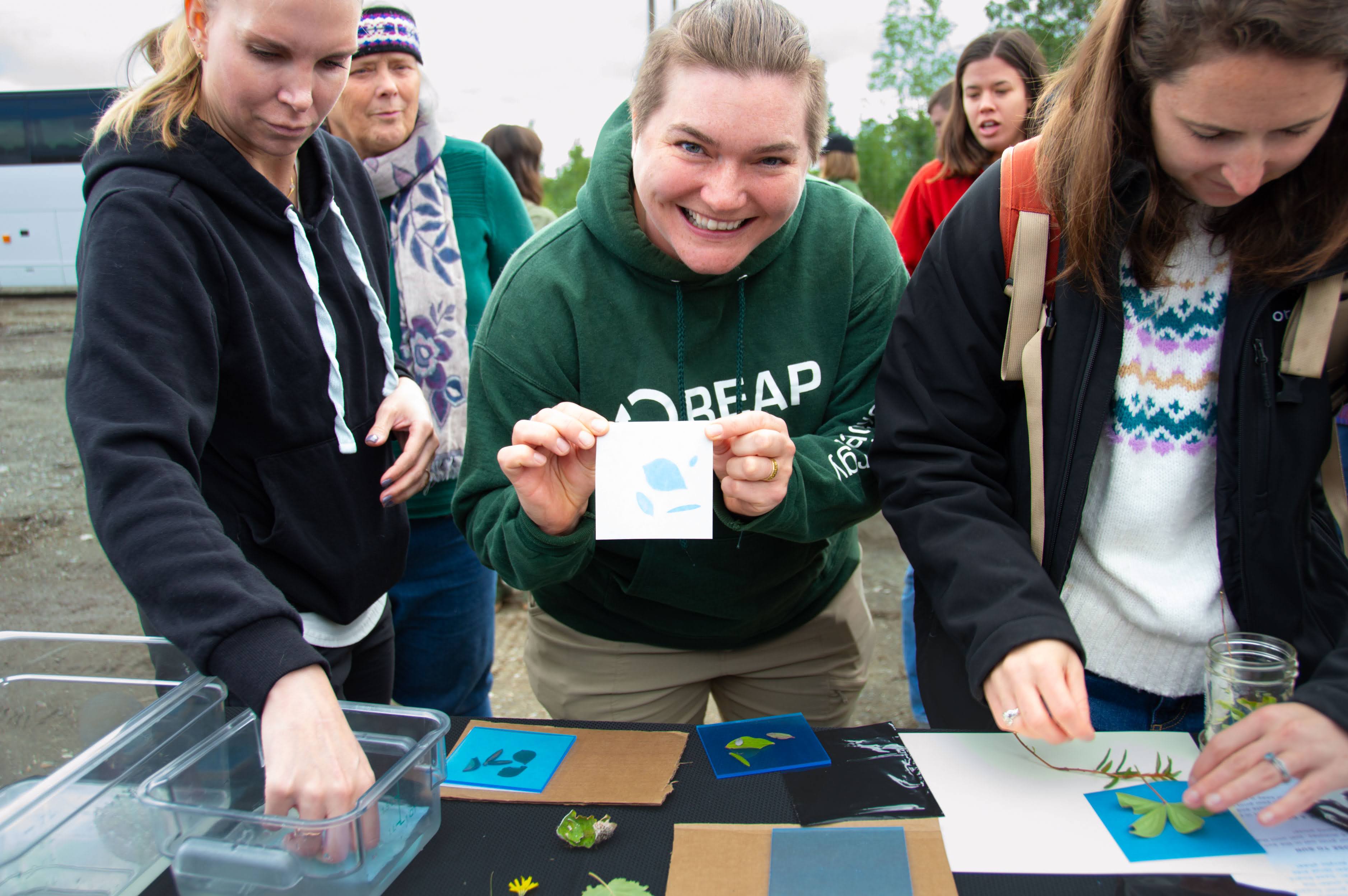Following the Sun to Alaska
September 17, 2024
By Savannah Crichton

An aerial view of Renewable IPP's 8.5 MW solar farm in Houston, Alaska.
The Follow the Sun tour Alaska, organized by the Alaska Agrivoltaics group and the National Center for Appropriate Technology, took place in August at the Houston solar array in rural southcentral Alaska.
Stakeholders interested in issues related to food, energy and land gathered in front of the 40-acre, 8.5-megawatt solar array that provides clean energy to the Matanuska Electric Association's customers and serves as the research site for the farthest north agrivoltaics research in the world. Agrivoltaics is the shared use of land for agriculture and solar photovoltaic, or PV, energy generation.
Stacie Peterson of NCAT kicked off the agenda, and Renewable IPP’s CEO Jenn Miller spoke about the importance of renewable energy and how solar can lower energy costs for Alaskans. Glenna Gannon, principal investigator for the agrivoltaics project, described the details of agrivoltaics from an agricultural perspective and explained how shade may have an impact on the vegetable crops, forage mix and native berries growing between the rows of solar panels.

Participants picked lingonberries growing between the solar panels.
Flora Deacon, an Indigenous chef, catered an Alaskan charcuterie event that featured locally-grown ingredients and showcased her talent for assembling culturally-relevant, delicious and nutritious foods. Some of the star ingredients were smoked salmon, smoked cod, and reindeer sausage, all served with Alaska-grown pairings. Deacon specially foraged lamb’s quarter, rhubarb and spruce tips to create a vegetarian dip and a spread of desserts. NCAT provided honey gathered from a beekeeping agrivoltaic site — “solar honey” — that sweetened the rhubarb pies.
After lunch, Gannon led the group through the solar panels while outlining some of the data streams that will measure plant health and PV energy generation during the research project. She pointed out some of the edible berries flourishing in the wide spaces between rows. Attendees gathered lingonberries, birch sprigs and fireweed flowers that they used to create cyanotype prints.
The open house at the Houston solar array not only highlighted the promising future of agrivoltaics in Alaska but also underscored the importance of community collaboration in advancing renewable energy development. The team looks forward to more energizing events that bring community together around food and energy security in Alaska.

The cyanotype station allowed people to take home sun printed souvenirs of solar-grown vegetation.
This event was made possible by the project partners: NCAT, U.S. Department of Energy Solar Energy Technologies Office; CleanCapital; Renewable IPP; University of Alaska Fairbanks Alaska Center for Energy and Power; and UAF’s Institute of Agriculture, Natural Resources and Extension.
The Solar Energy Technologies Office supports solar energy research, development, demonstration and technical assistance to improve the affordability, reliability and domestic benefit of solar technologies on the electric grid.


